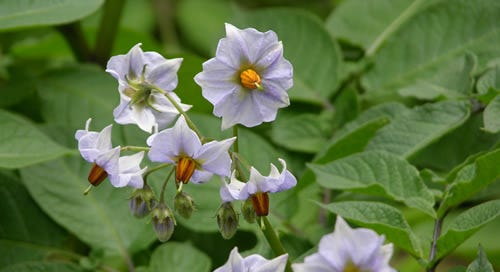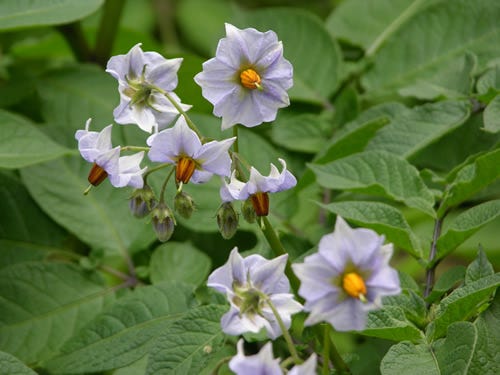There is so much going on in the world that I decided to take a little break from the essays on mold in order to cover one of the pressing issues facing all humanity at this time. Today’s post will be in two parts. The first is about food availability and safety. The second is about dietary options.
Though this is not the beginning of the assault, 500,000 acres of farm land in Idaho had their water shut off after planting the crops for 2024. The back story is that a deal was cut to provide the water to a cobalt mining firm. No consideration appears to have been given to the impact on the farmers, truckers, grocers, and consumers who were dependent on the crops being impacted.
In different forms, this is happening in many places, often without clear ecological, economic, and public considerations, in short: behind closed doors. According to one report, the unelected World Economic Forum that lacks any official enforcement status is pressuring countries to create famine. As of yesterday, there were 13 signatories, including the U.S. It is perhaps noteworthy that no Asian countries were listed, but otherwise, the geographic distribution was pretty much random.
Obviously, what will follow are food shortages, higher prices for what is available, and massive impacts on humanity and no doubt also pets.
After learning about colony collapse disorder, I started a website called landscaperevolution.com. The underlying idea was to provide safe flowers for pollinators which also involved planting hundreds of varieties of medicinal plants. I suffocated the lawn using a mixture of gardening strategies, one being the lasagna method. It involves laying down of cardboard and planting on top of the cardboard. The lawn will suffocate and decompose. The cardboard will also eventually disappear. This was combined with the Fukuoka permaculture philosophy of letting Nature have a say about what grows where. Initially, of course, I planted and mulched.
Wood chips are available for free here and over the years, I have had several deliveries that were used to create pathways between the gardens. I built a very small, heated greenhouse and several raised beds. My most exciting harvests were probably the humble potato.
This brings me to the point that Idaho is famous for potatoes. They are extremely easy to grow. Actually, they do not even really require “planting” as one can put them on the ground and little by little cover them with soil. They can also be grown in plastic bags, buckets, and containers of almost any type. The advantage of using bags is that harvesting is extremely easy.
It is a little late in the season for planting potatoes in some areas, but not too late for most places. Depending on the type of potato, harvesting may take 3-4 months and we probably still have enough sunlight ahead for this.
According to my Internet sleuthing, the U.S, has 40 million acres of lawns that constitute the largest irrigated crop in the country. In short, even if one only converts a small area, not everything as I did on my half acre, one is shifting the ecological balance while simultaneously enhancing food security and providing safe havens for pollinators.
If the truth be known, I was not born with a green thumb. I grew up in urban environments but did plant some pansies and watermelons as a child. In my early adult years, I lived in apartments and overseas in places that were temporary so I only really started to garden when leaving the State Department and settling in Hawaii. Then, I moved to Santa Fe and had to adjust from the tropics to high desert. Now, I am in the Pacific Northwest so this is the third exercise in coming to grips with a new environment. My skills are improving, but there is indeed a learning curve. This is why I mention potatoes because they really are easy to grow. Also, the flowers are pretty so it is joyful to watch the progress from sprouting potatoes to harvest.
The little town where I live is very conservative and conventional so neighbors would stand in front of my yard and gawk, but it seems my fever was not even slightly contagious.
Food Choices
When first becoming a vegetarian, my main opponent and critic was my mother. She was deeply offended as well as worried. She took my decision as a rejection of her parenting; and her researches suggested I would suffer from a B12 deficiency and become schizophrenic. Her doctor was on board with this theory, and they ganged up on me; but I had been posted with the State Department in India. There I met countless elderly and wise individuals who had never in their lives tasted meat. Several had marched with Gandhi and later convalesced on nothing but fresh coconut water/milk, and all seemed perfectly well balanced, intelligent, coherent, and healthy.
So, unlike those who “tried” to become vegetarians and thought they failed, I was very familiar with Indian food and was convinced it contained everything necessary to be both savory and conducive to graceful aging. It has been more than half a century now so it is surely safe to say that my faith has been rewarded.
What I learned when teaching Kitchen Doctor and counseling sick people about their diets is that almost nothing is more entrenched than dietary habits. These are often ethnic or cultural. That distinction may be based on tradition or modern conveniences. For example, Italians eat various kinds of pasta whereas Scandinavians like my mother might make spaghetti now and then as a change in routine, but certainly not as a mainstay. Modern may refer to people who rely on semi-prepared food that involves heating up something from a can or freezer. They snack on packaged food, often from vending machines, and have a vague knowledge of calories but very little understanding of vitality or the precise manner in which nutrients are utilized by the body.
The rubbish we learned in school about food groups is utter nonsense so people who are serious about health need to tackle an entirely new curriculum. The motivation for this often comes when ill and challenged just to maintain a level of efficiency in life. It may come from financial pressure or an “ah ha” experience in which one recognizes the deficiencies of the “normal” diet and gets serious about health and aging gracefully.
What I want to say today is that if the powers that be succeed in reducing methane by eliminating many animals, there are vegetarian alternatives that do not involve powdered insects and the other ingredients the powers that be would like to see on our plates. I am writing a flipbook on this as we speak so will not steal my own thunder; but the first step, I believe, is to use whole ingredients. For instance, we can all make soup so we do not need to open a can or carton that some factory threw together. We can cut our own onions, slice our own carrots and potatoes, cook our own lentils and beans, and, climate permitting, we can slow cook in a solar oven without paying for gas or electricity. In short, even if we are not paranoid about imminent starvation, we can be much more proactive and secure.
We can also make room for much more food diversity. Eating potato chips and peanut butter and jelly sandwiches is one way to eat, but we could be popping amaranth or lotus seeds and eating them instead of genetically modified popcorn.
Food can be grown in gardens, on window sills or walls, in pots or containers. I have seen estimates of the space required per person as low as 12 square feet to as high as 1.25 acres (half a hectare) for commercial farming. It obviously depends on what one is growing and where, but even way off the grid, one can survive IF one knows how.
If there is a positive response to this post, I will add to it. In the meantime, feel free to share this post with others.
Only 10% of subscribers are paid subscribers. If you would like to make a one-time donation, you can use this link. Recently, some of my IT work had been partly funded by a patron, but this was abruptly terminated a week ago leaving a great shortage of funds for completing the work that was underway. Please note, all subscriptions and donations are going through the Institute for Invisible Epidemics, and this is how the gifts will appear on your credit card statements.
Copyright by Dr. Ingrid Naiman 2024 || All Rights Reserved
For permission to quote, please contact the author. Sharing via e-mail and posting links are welcome so long as the author and source are properly cited. Reprinting is strictly prohibited.
Note: Bioethika International is the main site with a complete list of available herbs. The other active e-commerce enabled sites are Ayurvedic Bazaar, AdrenalHerbs.com, ImmuneFormulas.com. MoldHerbs.com has the herbs I used to recover from very serious mold exposure. ToxicTeeth.com has herbs for chelation. Referrals of new subscribers are always welcome. Just be sure you have permission from your friends before subscribing them.
Thank you so much!






Ingrid. I don't know if you remember me, donna czubernat. I was in the hospital last week for a myocardial infarction. A stint was put in and I was sent home with brilanta and crestor. I'm already bruised up from blood thinners. What can I do to ease off these meds? The statins are tough on me as well. I have sciatica pain and now can't take my ibuprofen. Any suggestions? Thanks.